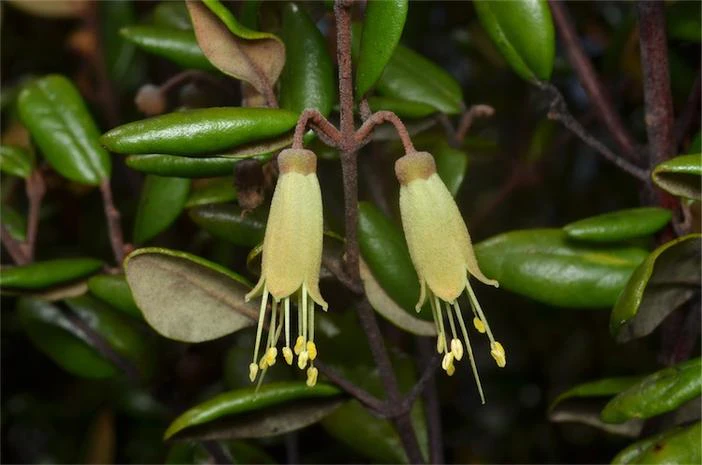Mountain Correa
(Correa lawrenceana)
Mountain Correa (Correa lawrenceana)
/
/

Murray Fagg
CC BY 3.0 au
Image By:
Murray Fagg
Recorded By:
Copyright:
CC BY 3.0 au
Copyright Notice:
Photo by: Murray Fagg | License Type: CC BY 3.0 au | License URL: https://creativecommons.org/licenses/by/3.0/au/deed.en | Uploader: Gderrin | Publisher: Wikipedia Commons















Estimated Native Range
Climate Requirements for Savannah, Georgia
| This Plant | Your Site | Plant Suitability for Your Location | ||
|---|---|---|---|---|
| • Precipitation | 23" - 98" | 50" | Aquatic | Aquatic |
| • High Temp. | 60°F - 87°F | 91°F | Your summers may be too hot for this plant. | Too hot |
| • Low Temp. | 19°F - 47°F | 39°F | Your winter temperatures are normal for this plant | Excellent |
This plant may not grow well at your location - your precipitation is too high.
Summary
Correa lawrenceana, commonly known as Mountain Correa, is an evergreen shrub or small tree native to the cool temperate rainforests, as well as sclerophyll forests and alpine regions of Eastern and Southern Australia, including Tasmania. It typically grows to a height of 6-9 feet (1.8-2.7 meters) and a width of 9-12 feet (2.7-3.6 meters). The plant features elliptical, leathery leaves and bears tubular flowers that are cream, green, and red, blooming in the winter and spring. The flowers are particularly showy and attract pollinators such as honeyeaters.
Mountain Correa is valued for its attractive, bell-shaped flowers and its ability to thrive in cooler climates. It is often used in gardens for screening purposes and to provide food for nectar-feeding birds. This species is frost-hardy and can tolerate snow, making it suitable for high-altitude gardens or areas with cold winters. In cultivation, it prefers part shade to full shade, consistent medium moisture, and well-drained soils. While it can be propagated easily from cuttings, growing from seed may present challenges. Gardeners should be aware that in some conditions, it can be susceptible to root rot if drainage is poor.CC BY-SA 4.0
Mountain Correa is valued for its attractive, bell-shaped flowers and its ability to thrive in cooler climates. It is often used in gardens for screening purposes and to provide food for nectar-feeding birds. This species is frost-hardy and can tolerate snow, making it suitable for high-altitude gardens or areas with cold winters. In cultivation, it prefers part shade to full shade, consistent medium moisture, and well-drained soils. While it can be propagated easily from cuttings, growing from seed may present challenges. Gardeners should be aware that in some conditions, it can be susceptible to root rot if drainage is poor.CC BY-SA 4.0
Plant Description
- Plant Type: Shrub, Tree
- Height: 6-9 feet
- Width: 9-12 feet
- Growth Rate: Moderate
- Flower Color: Cream, Green, Red
- Flowering Season: Winter, Spring
- Leaf Retention: Evergreen
Growth Requirements
- Sun: Part Shade, Full Shade
- Water: Medium
- Drainage: Medium
Common Uses
Bee Garden, Bird Garden, Butterfly Garden, Low Maintenance, Potted Plant
Natural Habitat
native to the cool temperate rainforests, as well as sclerophyll forests and alpine regions of Eastern and Southern Australia, including Tasmania
Other Names
Common Names: Eiffel Tower
Scientific Names: Correa lawrenceana, Correa lawrenceana var. ferruginea, Correa ferruginea, Correa lawrenceana var. glabra, Correa lawrenceana var. typica
GBIF Accepted Name: Correa lawrenceana Hook.